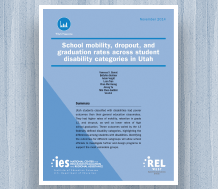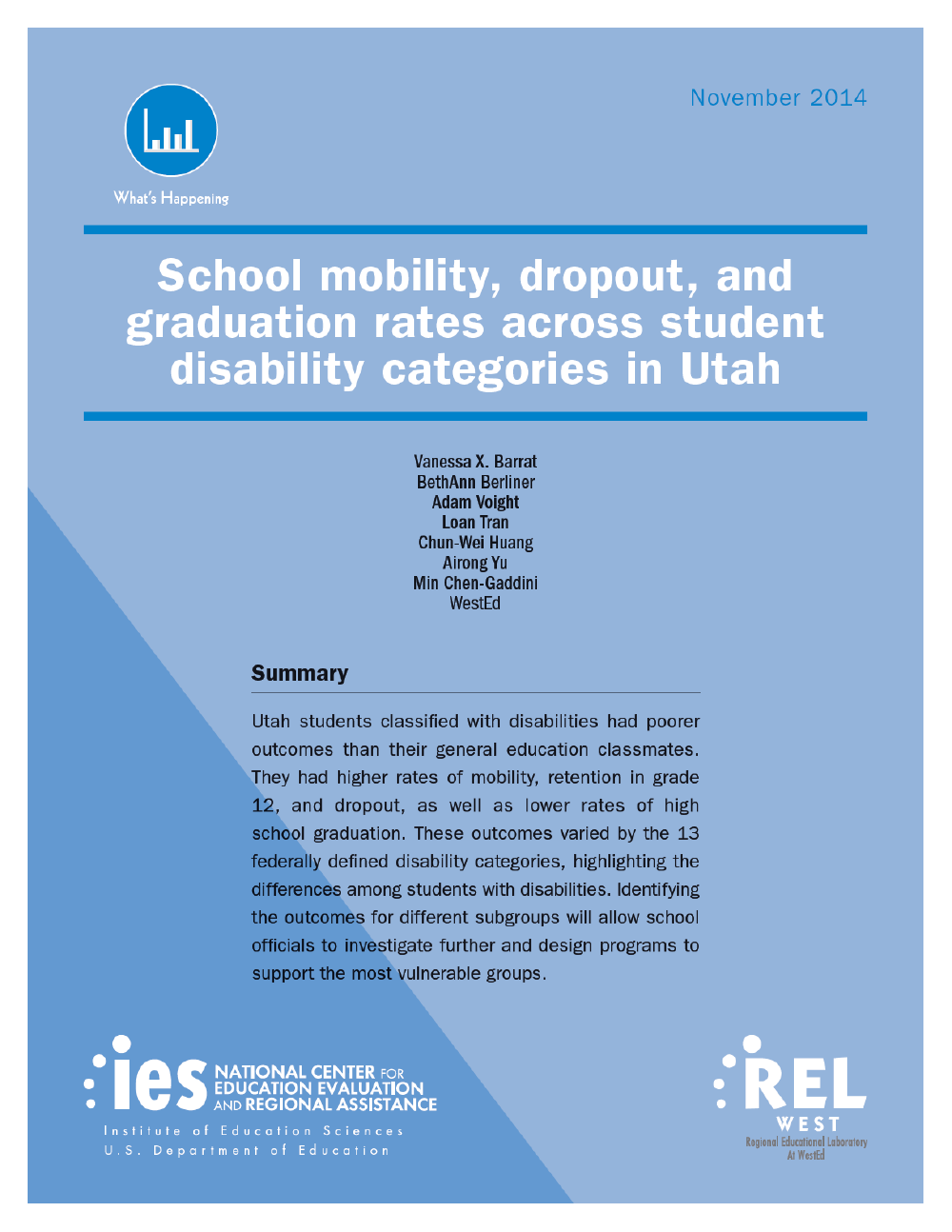Students With Emotional Disturbance at Greatest Risk of Dropping Out
Posted on

Research has long established that students with disabilities drop out of school at higher rates and graduate at lower rates compared to general education students. New research shows that outcomes vary by disability category, with students who have an emotional disturbance most likely to drop out.
“Emotional disturbance” is defined as a condition exhibiting specific characteristics over a long period of time and to a marked degree that adversely affects a student’s academic performance. Such characteristics include an inability to learn that cannot be explained by intellectual, sensory, or health factors; or and ability to build or maintain satisfactory interpersonal relationships with peers and teachers.
Regional Educational Laboratory West (REL West) researchers examined the rates at which Utah students with different types of disabilities, including emotional disturbance, moved to other schools, dropped out, or graduated compared to all students with disabilities and with general education students.
Additional research could help “construct a more complete understanding of the reasons why students with disabilities, especially students with certain disabilities, drop out,” state the study’s authors. “These insights could provide educators with new information about what is needed to keep and support these students in school so they earn a diploma.”
The REL West report, School Mobility, Dropout, and Graduation Rates Across Student Disability Categories in Utah and its findings were highlighted recently in Education Week* and Education Daily.
* Access to the complete Education Week article requires free registration.

